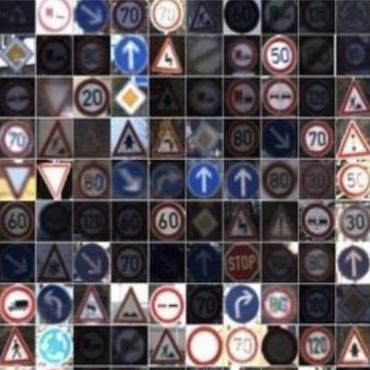Traffic Sign Recognition
37 papers with code • 10 benchmarks • 7 datasets
Traffic sign recognition is the task of recognising traffic signs in an image or video.
( Image credit: Novel Deep Learning Model for Traffic Sign Detection Using Capsule Networks )
Libraries
Use these libraries to find Traffic Sign Recognition models and implementationsMost implemented papers
Architecturing Binarized Neural Networks for Traffic Sign Recognition
Traffic signs support road safety and managing the flow of traffic, hence are an integral part of any vision system for autonomous driving.
Novel Deep Learning Model for Traffic Sign Detection Using Capsule Networks
Convolutional neural networks are the most widely used deep learning algorithms for traffic signal classification till date but they fail to capture pose, view, orientation of the images because of the intrinsic inability of max pooling layer. This paper proposes a novel method for Traffic sign detection using deep learning architecture called capsule networks that achieves outstanding performance on the German traffic sign dataset. Capsule network consists of capsules which are a group of neurons representing the instantiating parameters of an object like the pose and orientation by using the dynamic routing and route by agreement algorithms. unlike the previous approaches of manual feature extraction, multiple deep neural networks with many parameters, our method eliminates the manual effort and provides resistance to the spatial variances. CNNs can be fooled easily using various adversary attacks and capsule networks can overcome such attacks from the intruders and can offer more reliability in traffic sign detection for autonomous vehicles. Capsule network have achieved the state-of-the-art accuracy of 97. 6% on German Traffic Sign Recognition Benchmark dataset (GTSRB).
Traffic Sign Classification Using Deep Inception Based Convolutional Networks
In this work, we propose a novel deep network for traffic sign classification that achieves outstanding performance on GTSRB surpassing all previous methods.
A Hierarchical Deep Architecture and Mini-Batch Selection Method For Joint Traffic Sign and Light Detection
The root cause of this issue is that no public dataset contains both traffic light and sign labels, which leads to difficulties in developing a joint detection framework.
Traffic Sign Detection under Challenging Conditions: A Deeper Look Into Performance Variations and Spectral Characteristics
We investigate the effect of challenging conditions through spectral analysis and show that challenging conditions can lead to distinct magnitude spectrum characteristics.
Targeted Physical-World Attention Attack on Deep Learning Models in Road Sign Recognition
To alleviate these problems, this paper proposes the targeted attention attack (TAA) method for real world road sign attack.
Multi-column Deep Neural Networks for Image Classification
Traditional methods of computer vision and machine learning cannot match human performance on tasks such as the recognition of handwritten digits or traffic signs.
CURE-TSR: Challenging Unreal and Real Environments for Traffic Sign Recognition
We benchmark the performance of existing solutions in real-world scenarios and analyze the performance variation with respect to challenging conditions.
Rogue Signs: Deceiving Traffic Sign Recognition with Malicious Ads and Logos
Our attack pipeline generates adversarial samples which are robust to the environmental conditions and noisy image transformations present in the physical world.
DARTS: Deceiving Autonomous Cars with Toxic Signs
In this paper, we propose and examine security attacks against sign recognition systems for Deceiving Autonomous caRs with Toxic Signs (we call the proposed attacks DARTS).











 GTSRB
GTSRB
 FlickrLogos-32
FlickrLogos-32
 CURE-TSR
CURE-TSR
 Tsinghua-Tencent 100K
Tsinghua-Tencent 100K
 BelgaLogos
BelgaLogos
